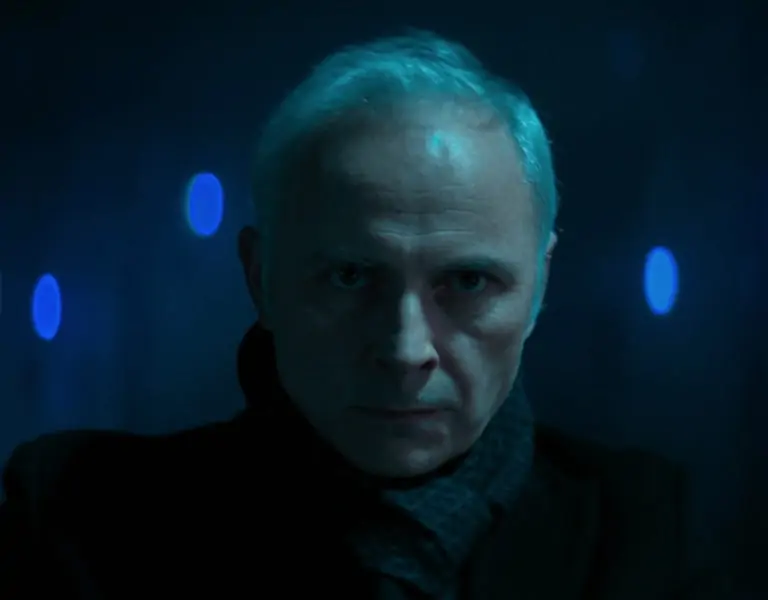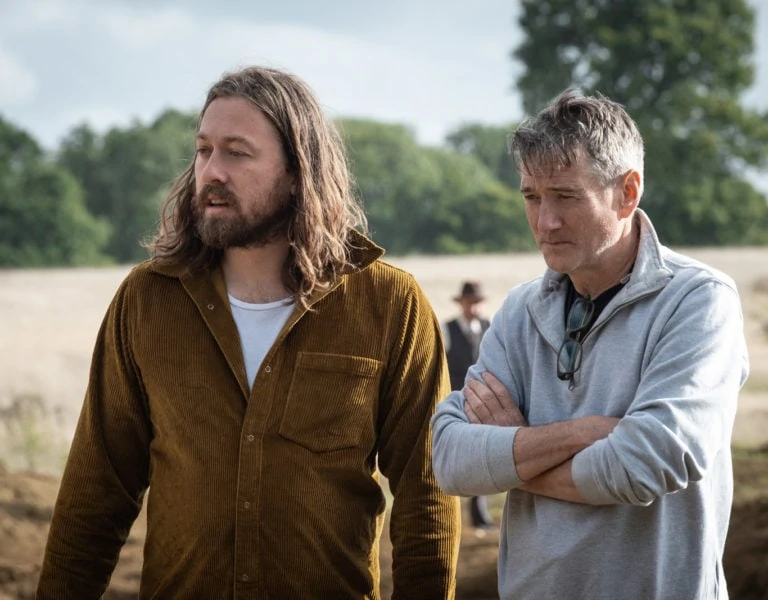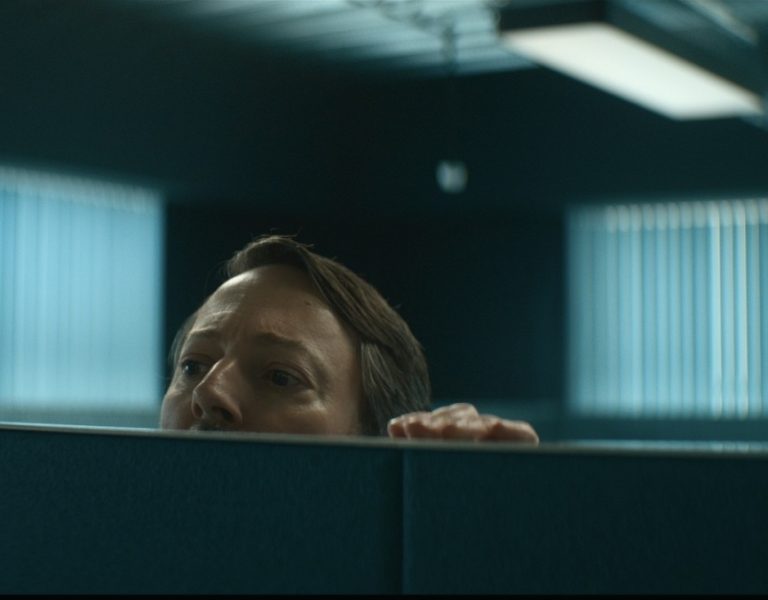Marion is a short film co-written and directed by Joe Weiland and Finn Constantine, with executive production by Sienna Miller and Cate Blanchett. The film has been selected for both the Venice and Toronto Film Festivals. British DP Harry Wheeler discusses his latest project.
Which cameras and lenses did you use and why?
We shot the 35mm film using the Aaton Penelope 2 perf camera with Zeiss Superspeed lenses. The handheld style we chose required a compact camera that allowed us flexibility, while the Zeiss lenses gave us a softer, vintage feel that complemented the raw, organic look we aimed for.
What were the biggest technical and logistical challenges, and how did you overcome them?
The biggest challenge was shooting the live ending sequence in a real arena. We had six Alexas filming the action. All on different Zoom lenses, 2x Optimo 24 – 290mm 1x Canon 50 – 1000mm on sticks and 2x Hand Held cameras with Fuji 19 – 90mm. We went and watched the event multiple times to get a sense of how it would unfold, but we had to remain adaptable on the day of shooting. Anything could happen. To capture it from Marion’s perspective, we ensured that at least a few of the cameras were always focused on her. Long lens immersion. The key to overcoming this challenge was having a highly skilled team of operators who knew how to react quickly and navigate the live setting without compromising the visual integrity of the film. It was like a live sports broadcast but we really gave it cinematic scale. The long take where Marion encounters her daughter was one of the most challenging yet rewarding shots in the film. It was a highly choreographed sequence, where the camera had to move fluidly, tracking Marion as she experiences this moment of tension. We started out on a wider lens but then shifted to a longer lens which brought much more intensity and energy. This shot required precision in timing, blocking, and coordination between Marion, the crew and the other actors.
How did you light it, which lights did you use and why?
The lighting was kept as simple and natural as possible, leaning heavily on practicals to create a 360-degree environment. In the changing rooms, we used fluorescent lights from above. We never wanted it to feel overlit or polished but instead raw and gritty. A lot of our references were green tinted fluorescents so we tried to lean into that. For the corridors, we used Alpha 3x 18k’s on scissor lifts, creating soft pushes from outside to subtly push light through the windows. I had to balance the stop inside and outside for a longer shot because I wanted to avoid an iris pull.
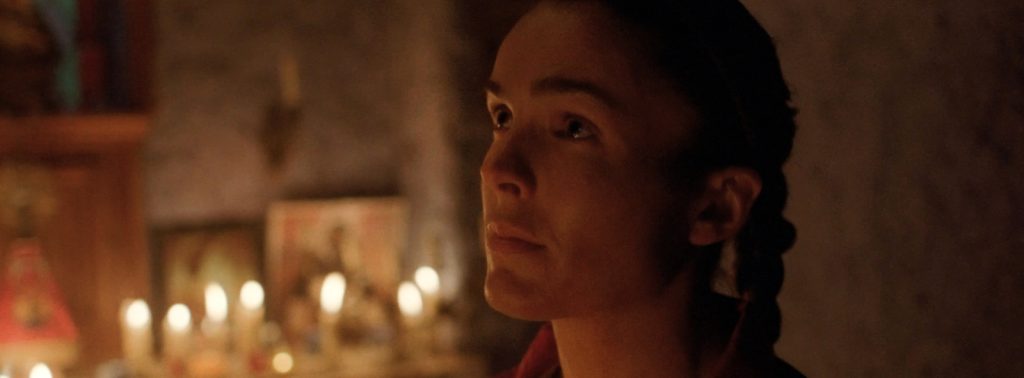
What was the biggest learning curve on the film?
Working with non-actors like Caroline presented a unique learning curve. We had to adapt our methods to create an environment where she could be herself without feeling overwhelmed by the presence of cameras. Balancing her natural performance with the demands of my department was an eye-opening experience, teaching us to work with more flexibility and sensitivity on set.
How did you approach the visual style and tone of the film?
We wanted to capture a raw, almost documentary-like feel for the film. We shot on 35mm Kodak 5219 500T film and pushed it one stop to bring out extra grain and contrast. Underexposing the film slightly allowed us to create a thin negative look, which gave the shadows a milky texture, enhancing the gritty, natural aesthetic. We looked to blend raw emotion with visual intensity, helping us shape a world that feels both intimate and grand.
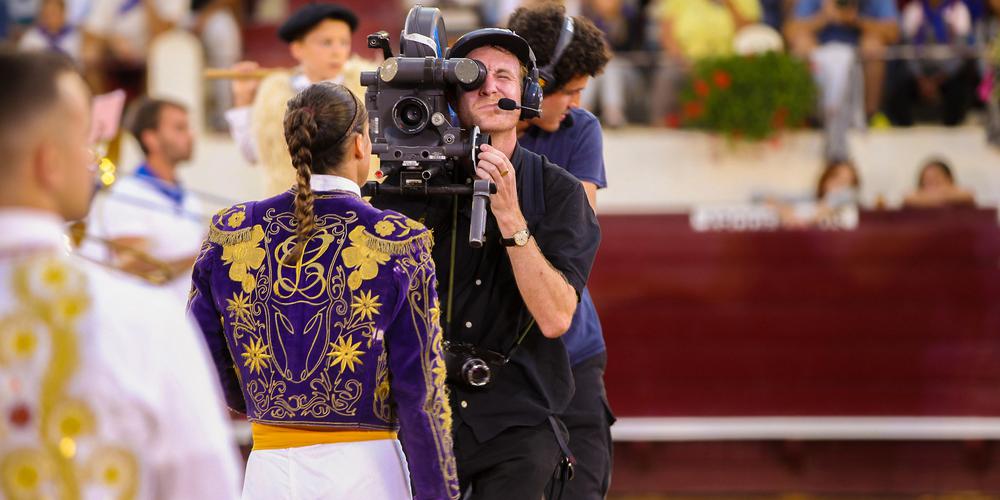
What techniques did you use to ensure continuity in the cinematography?
To ensure continuity, it was about keeping the set-up simple and minimizing distractions. We used a cohesive colour palette and lighting approach throughout the film to tie the different sequences together. We often kept the set closed, with just me and the focus puller in the room during the more intimate scenes. This helped maintain a consistent tone and visual flow while allowing the performances to unfold naturally.
How did collaboration with the directors and other departments influence your work?
Working with such young directors like Joe and Finn was inspiring because they were willing to take risks and had a fresh, clear vision. Joe and I worked together on his last film Gorka so we had a shorthand that carried through to Marion. It’s all built on trust and the directing team’s openness to collaboration meant that all departments—lighting, production design, sound—worked in harmony to bring out the best in each scene. We worked closely together to ensure that every department’s work complemented the overall aesthetic of the film.
Were there any specific inspirations or references that guided your cinematography?
We took significant inspiration from Darius Khondji’s work on Zidane: A 21st Century Portrait for the ending. The way he took a football match and made it a piece of cinema. It influenced our decision to use multiple cameras to capture the dynamic energy of the bull-jumping scene. We looked at films like Darron Aronofsky’s The Wrestler and Jacques Audiard’s Rust and Bone as good examples of balancing raw physicality with intimate emotional beats. Also László Nemes’s Son of Saul for on-the-shoulder immersion and really feeling the journey of a protagonist.
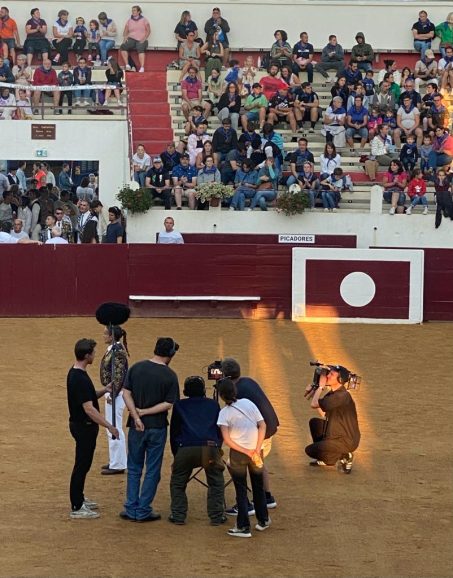
How did you adapt your shooting style to the story or themes of the film?
It’s Marion’s journey. The journey of one woman through an all-male world. We wanted to visually emphasize her isolation and the tension she experiences in that space, so the camera often lingered on her alone within wider, more expansive frames filled with the male team. This framing choice helped convey her singular presence in a world dominated by male figures, making her resilience and strength stand out even more. We’re with her throughout and the handheld style allowed us to fully experience every moment alongside her. It was about tapping into the quiet strength she carries.


